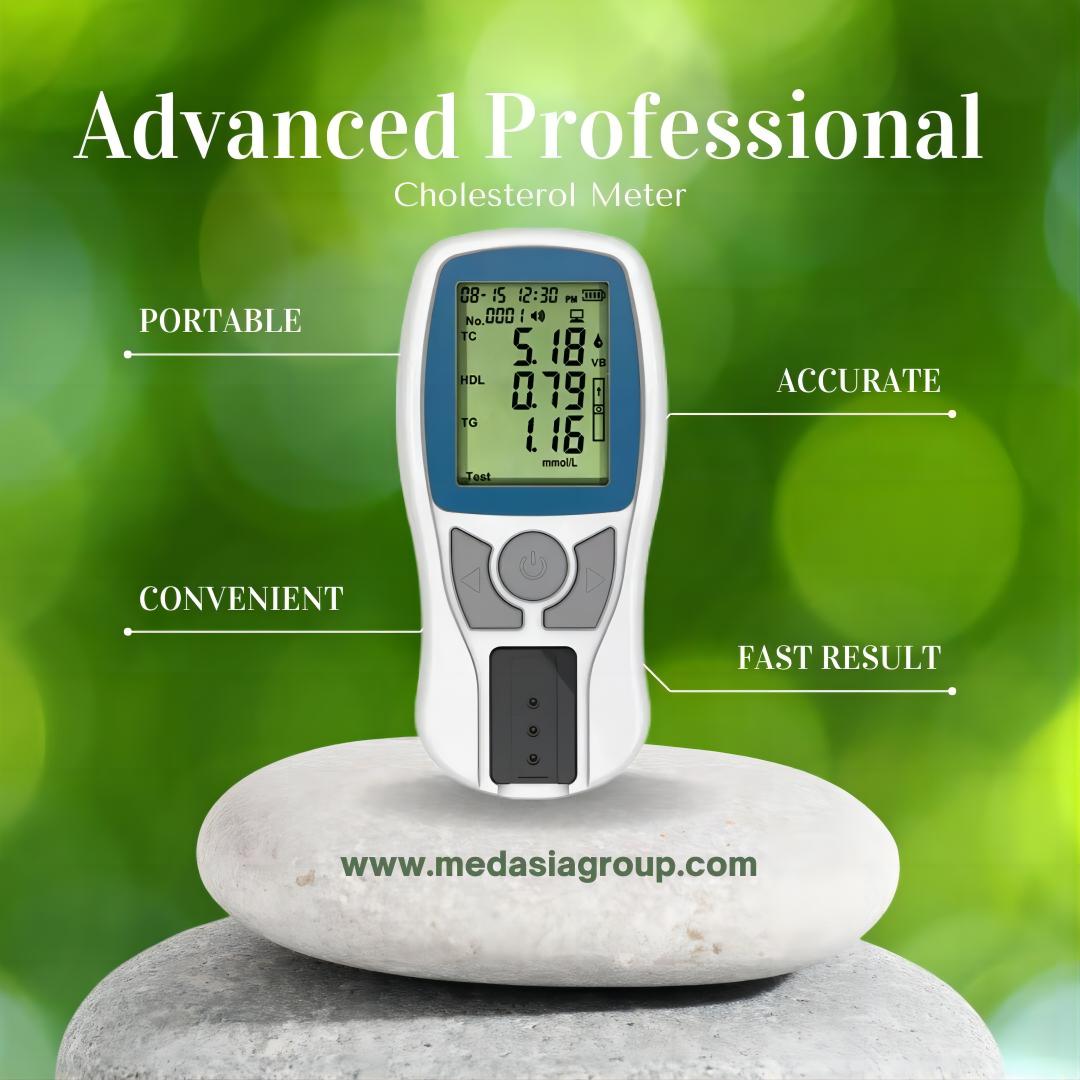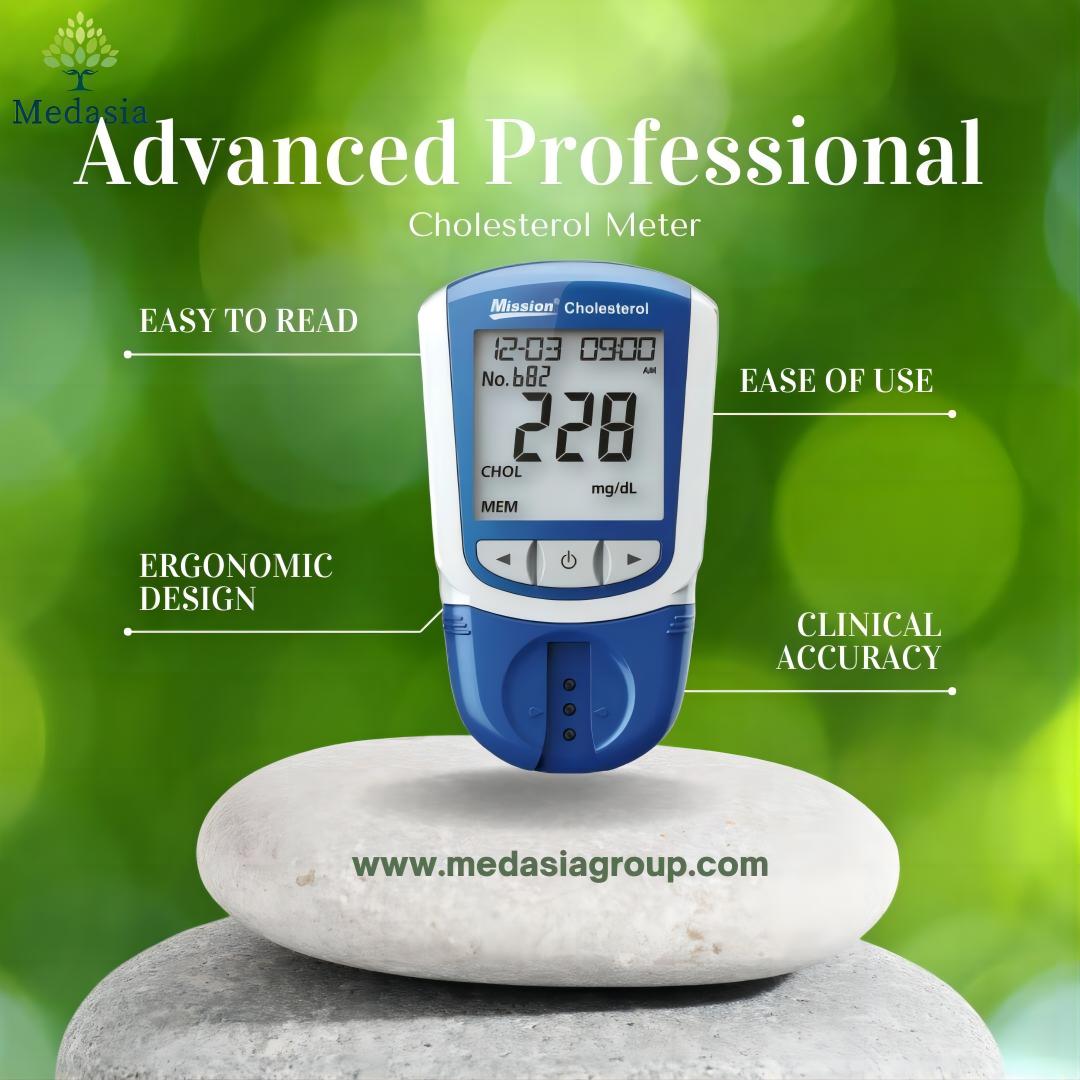Medasia - August 30th 2023
Portable Fetal Doppler: Bonding with Your Baby

The journey of pregnancy is a remarkable and transformative experience for expectant parents. From the moment you discover that you're expecting, a profound connection begins to form with the tiny life growing inside you. While the physical changes in your body are evident, there's one incredible aspect of this journey that has remained hidden until recent years: the ability to hear your baby's heartbeat whenever you desire, thanks to the innovation of portable fetal dopplers.
What is Portable Fetal Doppler and How Does it Work?

Fetal heart rate monitoring is a process that lets your doctor see how fast your baby’s heart is beating. If you’re pregnant, your doctor will want to make sure your baby is healthy and growing as they should. One of the ways they do that is to check the rate and rhythm of your baby’s heartbeat.
Fetal Heart Rate (FHR) serves as a valuable tool for assessing fetal well-being. By monitoring changes in FHR, healthcare providers can detect signs of fetal hypoxia, fetal distress, the presence of a nuchal cord, and other related symptoms. In domestic fetal monitoring, these FHR changes are primarily identified through the listening of fetal heart sounds, providing essential support for enhancing gestational safety.
The fetal heart rate undergoes its most noticeable changes during three specific periods in pregnancy:
1. Within 30 minutes after getting up
2.Within 60 minutes after lunch
3.Within 30 minutes before going to bed
During these three specific periods, the pregnant woman's physical condition undergoes changes, and there is increased demand for oxygen due to activities like food digestion. Consequently, the relative oxygen supply to the fetus decreases, potentially leading to symptoms of fetal anoxia. Testing the FHR during these periods is most suitable for accurately assessing the fetal health status as it directly reflects the impact of these physiological changes on the fetus.
A portable fetal doppler, also known as a pocket fetal doppler, is a handheld device designed for parents to listen to their baby's heartbeat. Measured FHR value and waveform are displayed on the LCD screen. A fetal doppler emits high-frequency sound waves that bounce off different tissues, according to Kenneth Lim, who leads the division of maternal fetal medicine at BC Women’s Hospital and Health Centre. When the equipment identifies a pulsating heart, it transforms this into an audible signal.
Here's a simplified explanation of how a fetal Doppler works:
1. Ultrasound Waves: The portable fetal doppler emits high-frequency sound waves (ultrasound waves) through the mother's abdomen.
2. Heartbeat Detection: When these sound waves encounter the fetal heart, they bounce back (reflect) due to the heart's movement.
3. Amplification: The portable doppler device detects and amplifies the reflected sound, turning it into an audible heartbeat.
4. Listening: The amplified heartbeat is then played through a speaker or headphones, allowing the mother and others present to hear the baby's heartbeat.
When It Is Used?

Fetal heart tones can typically be detected using a portable fetal doppler around 10–12 weeks into pregnancy. This is generally when the baby's heartbeat becomes strong enough and the doppler can pick up the sound reliably. However, the exact timing at which the heartbeat becomes audible can vary from person to person and may depend on factors such as the position of the baby and the mother's body composition.
The Topic of The Article
The central aim of this article is to introduce the concept of a portable fetal doppler, providing an overview of its functionality, operation, and potential applications. Ultimately, the article seeks to highlight how the use of this device can enhance convenience in monitoring the well-being of pregnant women.
The Company of Medasia
Medasia is dedicated to fostering global accessibility to healthcare by empowering individuals through self-care. Our ambition is to ensure that people worldwide have the means and knowledge to take control of their well-being.
Medasia, driven by innovation, specializes in self-tests for various medical conditions. We provide products that empower individuals to proactively manage their health conveniently and independently. Take the first step towards a healthier future with us.
For more information, visit www.medasiagroup.com
Applications of Portable Fetal Dopplers in Prenatal Care
Portable fetal dopplers serve a dual role in both clinical and home settings, making them versatile tools for monitoring fetal well-being:
Clinical Use in Hospitals and Clinics:
1. Prenatal Check-ups: Healthcare professionals, including obstetricians and midwives, use portable fetal dopplers during routine prenatal appointments in hospitals and clinics. These appointments aim to monitor the progress of pregnancy and assess the health of both the mother and the baby.
2. Fetal Heart Rate Monitoring: The primary function of these devices in clinical settings is to monitor the fetal heartbeat. By assessing the rate and rhythm of the baby's heart, healthcare providers can ensure it falls within the normal range, signifying a healthy pregnancy.
3. High-Risk Pregnancies: Portable fetal dopplers are especially valuable in cases of high-risk pregnancies, where more frequent monitoring is required to detect and address potential complications.
Home Use:
1. Daily Self-Monitoring: Portable fetal dopplers are designed to be user-friendly and are suitable for home use. Expectant parents can use them for daily self-monitoring, allowing them to listen to the baby's heartbeat in the comfort of their own homes. This provides convenience and reassurance.
2. Bonding and Emotional Connection: Potable fetal dopplers fosters bonding between the parents and the unborn child. Listening to the baby's heartbeat can be an emotional and connecting experience.
3. Peace of Mind: For many pregnant women, especially those who have experienced previous pregnancy complications, having a portable fetal doppler at home offers peace of mind. It allows them to check on the baby's well-being between medical appointments.
4. Involvement of Family: Home use also enables family members and close friends to share in the pregnancy experience by listening to the baby's heartbeat, enhancing the sense of togetherness.

Comparing the Advantages of Portable Fetal Dopplers and Doppler Ultrasound


Portable fetal dopplers and Doppler ultrasound machines serve different purposes in monitoring fetal well-being during pregnancy, and each has its own set of advantages. Here are the advantages of a portable fetal doppler compared to a Doppler ultrasound machine:
⭐Accessibility: Portable fetal dopplers are readily available for personal use and can be purchased without a prescription. They are compact, affordable, and can be used in the comfort of one's home. In contrast, Doppler ultrasound machines are medical devices typically used by healthcare professionals in clinical settings.
⭐Convenience: Portable fetal dopplers provide expectant parents with the convenience of monitoring their baby's heartbeat at any time during pregnancy. This can offer reassurance and promote a stronger emotional connection with the baby.
⭐Ease of Use: Portable fetal dopplers are designed to be user-friendly and require minimal training. They usually come with clear instructions, making them accessible to a wide range of users.
⭐Immediate Feedback: Users can receive immediate feedback by hearing the baby's heartbeat through a built-in speaker or headphones. This real-time feedback can provide comfort and reduce anxiety for expectant parents.
⭐Non-Invasive: Fetal dopplers are non-invasive and pose no known risks to the fetus when used according to instructions. Doppler ultrasound machines, while also non-invasive, are typically operated by trained healthcare professionals who can ensure correct usage and interpretation.
⭐Bonding and Emotional Benefits: Portable fetal dopplers allow parents to bond with their baby by listening to the heartbeat together. This can be a cherished and emotional experience during pregnancy.
Portable fetal dopplers, on the other hand, offer convenience, accessibility, and emotional benefits for parents who want to listen to their baby's heartbeat at home.
How to Choose a Suitable Fetal Doppler for Mothers


These two Pocket Fetal Dopplers adopts doppler technology in designing, it is a hand-held fetal heart rate detection device. Measured FHR value and waveform are displayed on the LCD screen. With easy and convenient operation, it can be used in hospital, clinic for daily self- check by pregnant woman, realing early monitring and care for life.
PROS
✅Elegant aesthetics
✅user-friendly operation
✅Magnetic probe
✅Pocket design
✅Users-friendly
✅Dynamic Color Screen
✅Auto Shutdown Feature After 1 Minute of No Interaction
✅Auto Shutdown Feature After 1 Minute of No Interaction
✅Fetal heart sound can be heard clearly for pregnancy more than 12 weeks
✅Two Audio Output Modes: In-Built Speaker and Compatibility with External Headphones
✅All of these two portable fetal doppler has the certificate of CE, ISO, FDA, CFDA.
These two things of portable fetal doppler are both offers a seamless and user-friendly experience for expectant parents. It incorporates several noteworthy features:
⭐ Elegant Design: With its elegant aesthetics, the device not only functions well but also looks stylish.
⭐ Compact and Efficient: The magnetized probe and space-efficient design enhance user-friendliness, making it a convenient choice for expectant parents.
⭐ Colorful Display: Featuring a vibrant full-color display screen, the device provides both numerical and graphical representations for comprehensive and visually appealing data.
⭐ Battery Monitoring: Users can easily monitor the device's battery status, ensuring they are aware of its power level.
⭐ Auto Power-Off: The device includes an automatic power-off feature, which activates after 60 seconds of no signal detection, promoting energy conservation.
⭐ Exceptional Sensitivity: The doppler probe's exceptional sensitivity ensures clear fetal heartbeat detection, starting as early as the 12th week of pregnancy.
⭐ Sound Options: Users have the flexibility to choose between two sound output options, utilizing the integrated speaker or external headphones for a personalized listening experience.

This pocket fetal doppler, designed based on the pulsed wave doppler principle, is a handheld Fetal Heart Rate (FHR) detection device. With its LED screen, it displays heart rate values and provides heart signal strength indications, offering easy operation. This versatile device finds applications in hospitals, clinics, and home settings, making it suitable for daily self-checks by pregnant women.
PROS
✅Digital LED Display
✅Pulse wave doppler technique
✅Fetal heart value display
✅Fetal heartbeat indication
✅Fetal heart signal strength indication
✅Intelligent noise reduction and Hi-Fi speaker audio output
✅Auto shutdown
✅Convenience and cost-effectiveness
✅Has certificate of CE, ISO, FDA, CFDA.
Introducing this cutting-edge portable fetal doppler, which offers a range of impressive features for expectant parents:
⭐Digital LED Display: The device is equipped with a clear and easy-to-read digital LED display, ensuring that you can access crucial information at a glance.
⭐Pulse Wave Doppler Technique: Utilizing advanced pulse wave doppler technology, this doppler provides accurate and reliable results when monitoring your baby's heartbeat.
⭐Fetal Heart Value Display: With precision, the device displays the fetal heart rate, allowing you to track your baby's heartbeat with confidence.
⭐Fetal Heartbeat Indication: Stay reassured with a clear indication of your baby's heartbeat, keeping you connected and informed throughout your pregnancy.
⭐Fetal Heart Signal Strength Indication: The device also provides feedback on the strength of the fetal heart signal, ensuring that you receive a reliable reading.
⭐Intelligent Noise Reduction and Hi-Fi Speaker Audio Output: Enjoy an exceptional audio experience with intelligent noise reduction technology and a high-fidelity speaker, ensuring that you hear your baby's heartbeat clearly and without interference.
⭐Auto Shutdown: For added convenience and power-saving, the doppler automatically shuts down after 60 seconds of no signal input, conserving energy and prolonging battery life.
⭐Convenience and cost-effectiveness: User-replaceable batteries save time and costs, eliminating the need for professional assistance or expensive servicing, ensuring uninterrupted device usage.
Symbols For Potable Fetal Droppler

How To Use Portable Fetal Droppler

- Startup, Press power button to turn on the device.
- Find the position of fetus. Find the optimal position for detecting fetal heart rate by feeling fetus position with hands. Apply proper amount of gel to the probe acoustic surface; attach the probe acoustic surface to the belly of pregnant woman, and move the probe to obtain an optimum audio signal. Adjust the volume according to your necessary
- FHR measurement. After hearing clearly and regularly fetal heart sound, a flickering fetal heart symbol appears on the screen. Please keep the probe stable to measure accurately and obtain correct FHR value.
- After measurement is completed, long press power button to turn it off.
NOTE:
①Put the probe on the most appropriate detecting position to get better detecting results.
②Do not put the probe on the position where Placental Blood Sound(PBS) or Umbilical Sound (UMS) is very strong.
③If the pregnant women takes supine position and the fetus position is normal, you can obtain the clearest fetal heart sound at the lower part of navel midline.
④The device can not detect FHR unless clear fetal heart sound is heard.
Key Factors to Consider When Purchasing Portable Fetal Doppler
When Using a Portable Fetal Doppler
1.Cleaning:
Prior to cleaning, ensure the device is powered off and the batteries have been removed. Maintain the external surface of the device in a dust-free and clean condition, including the display screen, using a soft, dry cloth.
If additional cleaning is needed, employ a soft cloth dampened with a solution of mild soap or water to clean the device's surface, followed by a thorough drying with a clean cloth.
For the probe, utilize a soft cloth to eliminate any residual ultrasound coupling gel, cleaning it exclusively with soap and water.
2.Maintenance:
Handle the probe delicately as it's fragile and wipe off gel after use to extend the device's lifespan. Before each use, check for damage that could affect safety or performance, replacing any faulty parts. Periodic safety testing, including leakage current checks, is necessary, typically every two years. Remember, you can't adjust Fetal Heart Rate (FHR) accuracy; if uncertain, verify with a stethoscope or contact the manufacturer for assistance.
3.Disinfection:
After every use, follow the cleaning procedure outlined above for the device enclosure and probe. After cleaning, disinfect the probe using 70% ethanol. Finally, ensure that the probe is completely dry by wiping it with a clean, dry cloth to remove any remaining moisture. This practice helps maintain hygiene and device integrity.

Emerging Trends in At-Home Health Testing

The Science Behind It: How Mercury-Free Glass Thermometers Are Changing the Medical Industry

A Comprehensive Guide to Measuring High Cholesterol Levels: Everything You Need to Know


